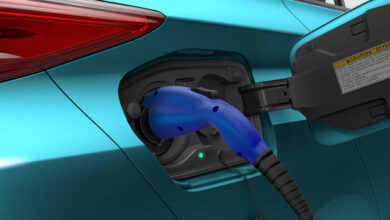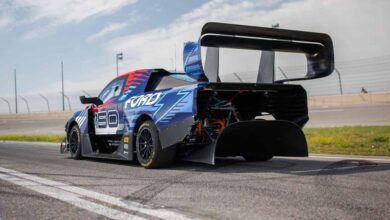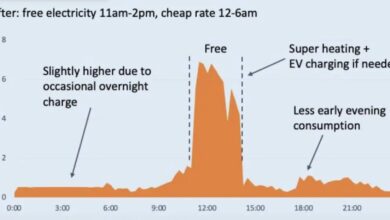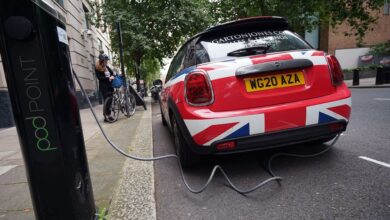Things Are Confusing For Non Tesla Drivers That Want To Use Superchargers

My father-in-law owns a Kia Niro EV and is planning to take his first long, multi-state road trip in it next month. He recently asked me which Tesla charging adapter(s) he needs to get in order to use Tesla’s charging equipment. I did a little research for him to help map out possible routes on his drive from Washington state to Northern California. Because his EV can only charge at a maximum rate of 85 kW, in order to spend as little time as possible stopped for charging I am looking for Tesla Superchargers mainly, as well as Tesla Destination chargers that may be at places he might stay the night or spend at least a few hours sightseeing along the way.
According to Tesla, there are 3 types of Superchargers in its network that correspond to 3 different approaches:
- Tesla-only Superchargers, which only work for Tesla vehicles.
- All EVs Superchargers, which are available for all EVs to charge with a “Magic Dock” adapter that is provided at the charging post.
- NACS Superchargers, which will become available gradually, by vehicle manufacturer, and can be accessed through an adapter. The adapter has to be provided by your vehicle manufacturer. For new vehicles that are NACS-equipped, no adapter will be necessary.
For the 3rd type of supercharger, only Rivian and Ford, so far, have adapters that will work, apparently. That means that Kia EVs and those from brands other than Ford and Rivian can only currently use the dozens of Tesla Superchargers equipped with the “Magic Dock” adapter (2nd type). Note, that nearly all other EV manufacturers have signed on to the NACS standard which means their EVs will use the NACS receptacle on their vehicles (and won’t need an adapter) going forward, but depending on the manufacturer that won’t be the case until later this year, next year, or later. So anyone that currently drives a non Tesla EV or is buying a non Tesla EV over the next few months – few years will probably need an adapter to take advantage of the 3rd type of Superchargers (which are far more numerous than the Magic Dock Superchargers, currently). I used the PlugShare app to filter for only Tesla Superchargers with the Magic Dock (by selecting the CCS standard and then restricting the network to only “Superchargers”) to see if there might be any such Supercharger stations near where my father-in-law is driving and unfortunately that doesn’t look to be the case as the only such chargers between San Francisco and the Canadian border are either in Eastern Washington state, on the Olympic Peninsula, or in Placerville, California (which may be somewhat near where he ends up on the furthest leg of his trip). This means that Tesla Superchargers are likely of no use to him at this time (though next year, when Kia releases a NACS adapter, it will be a different story and he should be able to use the 3rd type supercharger, and or whenever Tesla may offer more of the Magic Dock superchargers along the northern half of the west coast).
But all is not lost! There are a lot of Tesla destination chargers, some of which can charge at up to about 11kW (which translates to something like 40+ miles of range per hour) and there are many different adapters a Kia Niro EV (or pretty much any non Tesla EV) can use. Again using the PlugShare app, filtering for only Tesla chargers (versus Tesla (Fast) chargers) I can see that there are dozens of different Tesla Destination chargers between his house, along Interstate 5 and along Highway 101 (he wants to spend some time driving along the coast too since it is more scenic and conducive to maximum EV range with lower speed limits). Most of these are at hotels or scenic destinations so if he is thinking of borrowing the adapter I bought for my Kia Sorento PHEV and using it at a place he might stay on the Oregon coast, or a place he may stop for a couple hours to eat and see some sights, then he could certainly recharge his Kia EV that way too. Otherwise, the problem with his trip is that if he wants to travel along the Oregon coast, there is a relative lack of fast charging options and he likely will need to join yet another charging network besides Electrify American and ChargePoint: EVCS, a network I will point out that along the southern half of the Oregon coast mostly has “slow” 50kW fast chargers. Even some of the level 2 240V stations are part of the EVCS network (not that that is a problem in and of itself, just a minor hassle of joining another network or making a phone call to use such chargers). There are also some Rivian fast charging options along the coast, but those are only available to Rivian owners at this time. Finally, even though there are “fast” chargers at convenient distances along the Oregon coast, many of them only have a one or two fast charging plugs, which means that there could easily be a wait to charge on these (mostly) slower 50 kW charging stations.
In my next piece I will look at what might be the best routes, in terms of having least worry/best charging experience on a drive like the one my father-in-law is about to take. Have you ever had any concern about taking a long road trip in a non Tesla EV? Where was your trip to, and what was your experience like?
Please leave any questions or comments below.
Images courtesy of Justin Hart.
Justin Hart has owned and driven electric vehicles for over 15 years, including a first generation Nissan LEAF, second generation Chevy Volt, Tesla Model 3, an electric bicycle and most recently a Kia Sorento PHEV. He is also an avid SUP rider, poet, photographer and wine lover. He enjoys taking long EV and PHEV road trips to beautiful and serene places with the people he loves. Follow Justin on Torque News Kia or X for regular electric and hybrid news coverage.







